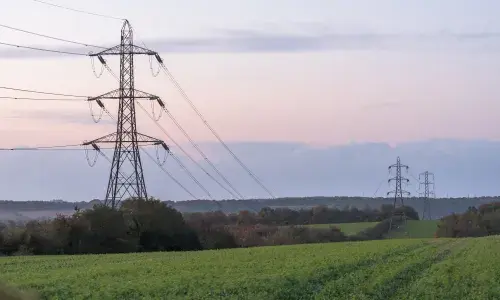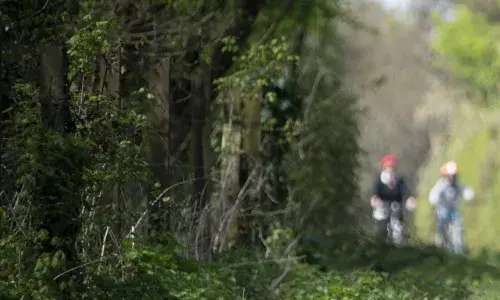
Biodiversity Net Gain - new requirements for connections
Environmental and Biodiversity Net Gain requirements for new customer sites
Mandatory government requirements for 10% Biodiversity Net Gain (BNG) have been implemented as of 12 February 2024 for all planning applications in England for developments subject to the Town and Country Planning Act (TCPA). For Wales, a Net Biodiversity Benefit approach is being adopted.
These guidelines will apply to both the build of new electricity transmission assets, as well as developer specific user assets, and must be considered as part of any project plans.
Development projects must ensure that they continue to minimise impacts to nature and do not detrimentally affect wildlife in a local area. If this cannot be avoided and there is no suitable space on site, alternative habitats must be created elsewhere offsite with partners at registered BNG offset sites. Local planning authorities will be required to ensure that BNG plans are suitably robust and that any habitats created are secured and managed for at least 30 years.
How does National Grid Electricity Transmission (NGET) ensure compliance with targets?
National Grid Electricity Transmission has a license for permitted development which ensures that projects within certain guidelines that are important for security of supply and future energy needs can be undertaken. For example, the extension of a substation to provide additional bays would come under this license (under certain conditions, as defined by the Town and Country Planning (General Permitted Development) (England) Order 2015/596).

However, although permitted development falls outside the mandatory 10% BNG requirements, these projects still require compliance with the Environmental Commitments within our Environmental Action Plan. NGET has a Net Gain commitment that ensures that it provides a minimum of 10%, with a target of achieving 15% of BNG when extending or building new assets or infrastructure.
When site studies are conducted to locate a new substation or expand an existing one, NGET will carry out ecology surveys to understand what is in existence before development, and wherever possible, seek to avoid loss and impact to high value habitats or for specific protected species on any potential land.
Where impacts cannot be avoided, plans to compensate for losses as well as actions to accommodate these species will be made elsewhere in accordance with requirements, or alternatively, measures are taken to boost their habitat on other NGET-owned land. This is done for a variety of reasons.
Firstly, we ensure that we comply with environmental legislation and other requirements or corporate commitment including BNG and wherever possible, seek to provide extra consideration for local species.
Secondly, we have a statutory duty under Schedule 9, Section 3 of the Electricity Act (1989), which requires us to ‘regard... and conserve flora, fauna, and geological features’, which we adhere to at all times.
Finally, whilst we build and develop to boost the security of the national networks, we also seek to support the local environment, and improve natural resources for communities.
Some of the environmental studies that we consider when planning new transmission developments are:
- Nesting bird surveys, done in both winter and summer. Nesting birds are especially protected by law. For more information, visit here.
- Migratory bird surveys - crucial to ensure transitory species are not adversely impacted by new developments. For more information, visit here.
- Bat and other vulnerable or endangered mammal assessments, including water voles, hazel dormice, and others, including aquatic wildlife impact assessments- such as Great Crested Newts. For more information, visit here.
- Image

Work to search for aquatic wildlife- including Little Whirlpool Ramshorn Snails and Great Crested Newts
NGET supports the government in its recommendations via the Transmission Acceleration Action Plan (TAAP) to strategically invest and build the networks via a Strategic Spatial Assessment Plan, which will act as the overarching framework for specific Centralised Strategic Network Planning to deliver project ready resources.
This Strategic Spatial Assessment Plan will also address all necessary environmental studies for development:
‘A spatial plan needs to consider competing demands for space and interact with other activities and sectors such as… nature restoration… as well as local and national planning processes. We are engaging across government to ensure that the Strategic Spatial Energy Plan (SSEP) aligns with existing statutory planning and consenting processes, wider planning reform and work to map out economy-wide land and marine use, such as the Land Use Framework and Marine Spatial Prioritisation programme… A future SSEP will require an onshore and offshore strategic environmental assessment, and a plan-level Habitats Regulation Assessment (HRA).’- Recommendation SS2, pg. 26 in the TAAP
To find out more about the way new substations are triggered, and the processes we follow at NGET for new transmission assets, read our article here.


